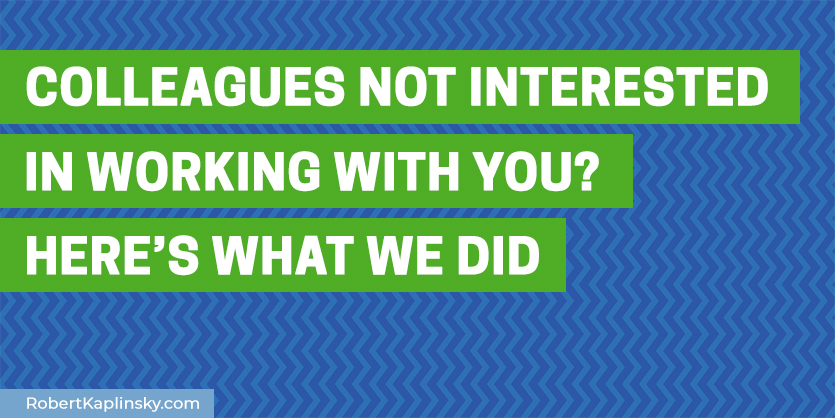Have you ever been excited about something like a fun lesson or a conference you wanted to attend? Then when you told your colleagues about it, you hoped they’d be excited too, but instead they were less than enthusiastic.
When I worked as a teacher specialist for Downey USD, I often found myself in this situation. For years, I thought I could win people over with sheer enthusiasm, but the reality was that often I didn’t get anywhere and had limited success.
Here’s an example of what it looks like:
Notice that in the first round, the shark catches one minnow so in the second round, there are two sharks. However, since neither shark catches a minnow in round two, there are still just two sharks in round three. Eventually there are so many sharks that they’re everywhere and the minnows have nowhere to escape to.
What John helped me realize was that I was playing my real life Sharks and Minnows game wrong. I thought that the best way to play was to go after the math department’s thought leaders and try and convince them. I figured that if I could get them to change, everyone would follow their lead and it would be much easier to convince the rest of the teachers to change as well. It sounded good in theory. In reality it totally failed.
It was like playing Sharks and Minnows by trying to go after the strongest swimmer. I thought that if the strongest swimmer was on my team, we’d be unstoppable. Instead, I wound up exhausted from chasing around a minnow I couldn’t catch and still being the only shark.
It takes time, but eventually you’ll have enough sharks that you’ll be able to catch minnows you couldn’t ever catch on your own. This shift in strategy lets you focus on supporting your new sharks and making them into super stars. As they gain more success and recognition, it’ll continue to get easier. While you may not be able to catch all minnows, eventually, you should be able to get a lot more than you would have if you just went after the strongest swimmer.
What do you think? Have you been through similar experiences? Let me know in the comments?

